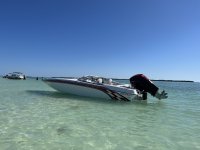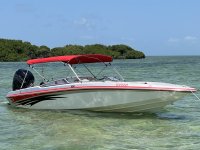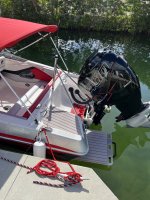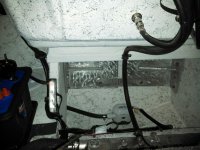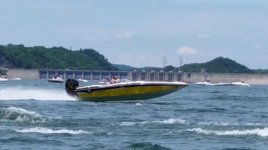I’m set on a re-power of my 07 2400 Crawl through (Jupiter’s boat and then Trace’s if anyone recalls it). I purchased the boat from Trace with a 300R for power and I undoubtedly do not believe that it lacks power, but I feel as though I would be able to enjoy the extra power and speed.
I ruled out the V10 400R as the 2.6l 400R is very reasonable to buy (i see some listed for way less than I could sell my 300r for). The 400R is obviously the economical choice here at the expense of the old style cowl, which would kill the aesthetic of the boat compared to the 300. We are also slowly upgrading the entire boat into 2023 and I feel that an old design would be going in the wrong direction. I’m also hesitant to choose the 400 over the 450 as it appears (I cant find sources) that someone has powered a 2400 with a 450 and it is quite a bit faster than the 400. This obviously comes at a much bigger cost.
450R’s are entering the used market already after the announcement of the 500r. I genuinely would prefer the 450R but want to confirm that the transom can handle it. How will the extra 150ish pounds hanging off the transom affect planing, handling, etc? I anticipate adding trim tabs and a ballast tank (for rough water only)in the bow if needed.
As a cliff note, I can not find any used 300R’s for sale for pricing reference. What can I reasonably expect to fetch for a 2021 300R with torquemaster and ~160 hours?
Final question- will both of these options bolt directly onto the 300r rigging or will this wind up being far more involved?
Thanks!
Ross
I ruled out the V10 400R as the 2.6l 400R is very reasonable to buy (i see some listed for way less than I could sell my 300r for). The 400R is obviously the economical choice here at the expense of the old style cowl, which would kill the aesthetic of the boat compared to the 300. We are also slowly upgrading the entire boat into 2023 and I feel that an old design would be going in the wrong direction. I’m also hesitant to choose the 400 over the 450 as it appears (I cant find sources) that someone has powered a 2400 with a 450 and it is quite a bit faster than the 400. This obviously comes at a much bigger cost.
450R’s are entering the used market already after the announcement of the 500r. I genuinely would prefer the 450R but want to confirm that the transom can handle it. How will the extra 150ish pounds hanging off the transom affect planing, handling, etc? I anticipate adding trim tabs and a ballast tank (for rough water only)in the bow if needed.
As a cliff note, I can not find any used 300R’s for sale for pricing reference. What can I reasonably expect to fetch for a 2021 300R with torquemaster and ~160 hours?
Final question- will both of these options bolt directly onto the 300r rigging or will this wind up being far more involved?
Thanks!
Ross


